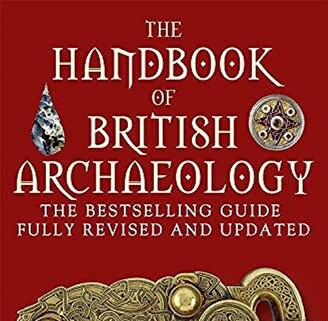Ken Hill, near the village of Snettisham in north-west Norfolk, is a special place. This promontory overlooking the Wash is a conspicuous feature in an otherwise flat and marshy coastal landscape, commanding views across the North Sea. It sits close to the Crown’s estates at Sandringham, and over the last few hundred years the land has been used for grazing, arable farming, and shooting. Some 2,000 years ago, however, the slopes of this hill saw the deposition of some of the most ornate ancient metalwork found in Britain: a series of gold hoards that lay largely undisturbed as the world moved on around them, until a chance discovery in the mid-20th century.
On a cold November day in 1948, a young tractor driver, Raymond Williamson, was working on the slopes of Ken Hill when his plough struck something hard. After climbing down to investigate, he retrieved what looked like the remains of an old brass bedstead, threw it to the side of the field, got back on his tractor, and continued with his task. The following day, though, he found more old metal, this time a ‘lot of twisted wire’. Again, no one thought much of the finds, and Williamson probably forgot all about them until a local company owner became interested, and they eventually came to the attention of Roy Rainbird Clarke, the Curator of Archaeology at Norwich Castle Museum. Clarke rushed to investigate – fighting transport delays and road closures because of a freezing fog that had descended over much of eastern Britain – and soon realised that Williamson’s discarded find was no bedstead. The ‘brass bed fittings’ were actually more than 2,000 years old, and they were made not of brass, but gold. In fact, they were neck- rings that would have been worn by people during the later Iron Age – unknown to him at the time, Raymond Williamson had stumbled on one of the most important archaeological sites in Britain.
Despite its significance, Williamson’s find was just one of a series made at Snettisham over the next 70 years. The first came just two years later in 1950, when another ploughman, Tom Rout, unearthed a beautiful golden torc (now known as the ‘Great Torc’) with intricately decorated terminals. Legend has it that George VI was staying at the nearby Sandringham estate at the time, and the artefact was taken by the landowner to be admired by the king.
There were only infrequent finds through the 1960s and 1970s, and it was thought there were no more treasures to be found at the site, but in August 1990 a metal-detectorist named Cecil ‘Charles’ Hodder once again struck gold. This time, it wasn’t the finely wrought torc that Hodder had perhaps been hoping for when he gained permission to detect at the site; rather, he recovered more than 500 fragmentary objects in alloys of gold, silver, and bronze, a group that we now know had originally been buried in an upturned bronze helmet (of which, more below). Hodder reported his discovery to the Norfolk Archaeological Unit and, soon after, in December that year, a second archaeologist and his team returned to investigate. Dr Ian Stead, then Deputy Keeper of the Department of Prehistoric and Romano-British Antiquities at the British Museum, began a large-scale excavation that lasted for three successive seasons between 1990 and 1992, uncovering several more hoards, as well as evidence about the longer history of the site.
Subsequent excavations and surveys in the 2000s and 2010s have added to this picture, and, in all, more than 1,200 metal artefacts have been found from this single field – which perhaps inevitably became known as the ‘gold field’, owing to the material from which many of the objects had been made.
…
Let’s start with the most impressive objects from Snettisham, the finds that make the site so exceptional: the torcs. These are metal neck-rings, sometimes with decorated terminals at the front. Similar objects were worn across much of Europe, but the number found at Snettisham is unprecedented. There are more than 60 complete or near-complete torcs from the site, with hundreds more represented by fragments. This compares to 85 or so examples known from the whole of the rest of Britain. Taking all 14 hoards together, it is the largest assemblage of ancient gold jewellery from anywhere in Europe.
…
Further reading:
Julia Farley and Jody Joy (eds) (2024) The Snettisham Hoards (British Museum Research Publication 225; British Museum Press, ISBN 978 0861592258, £40).

